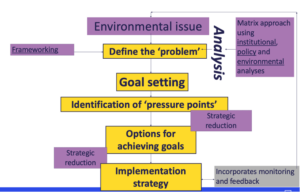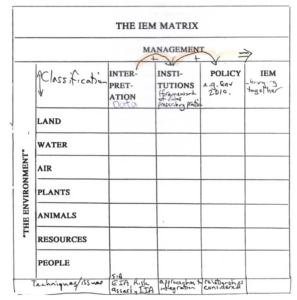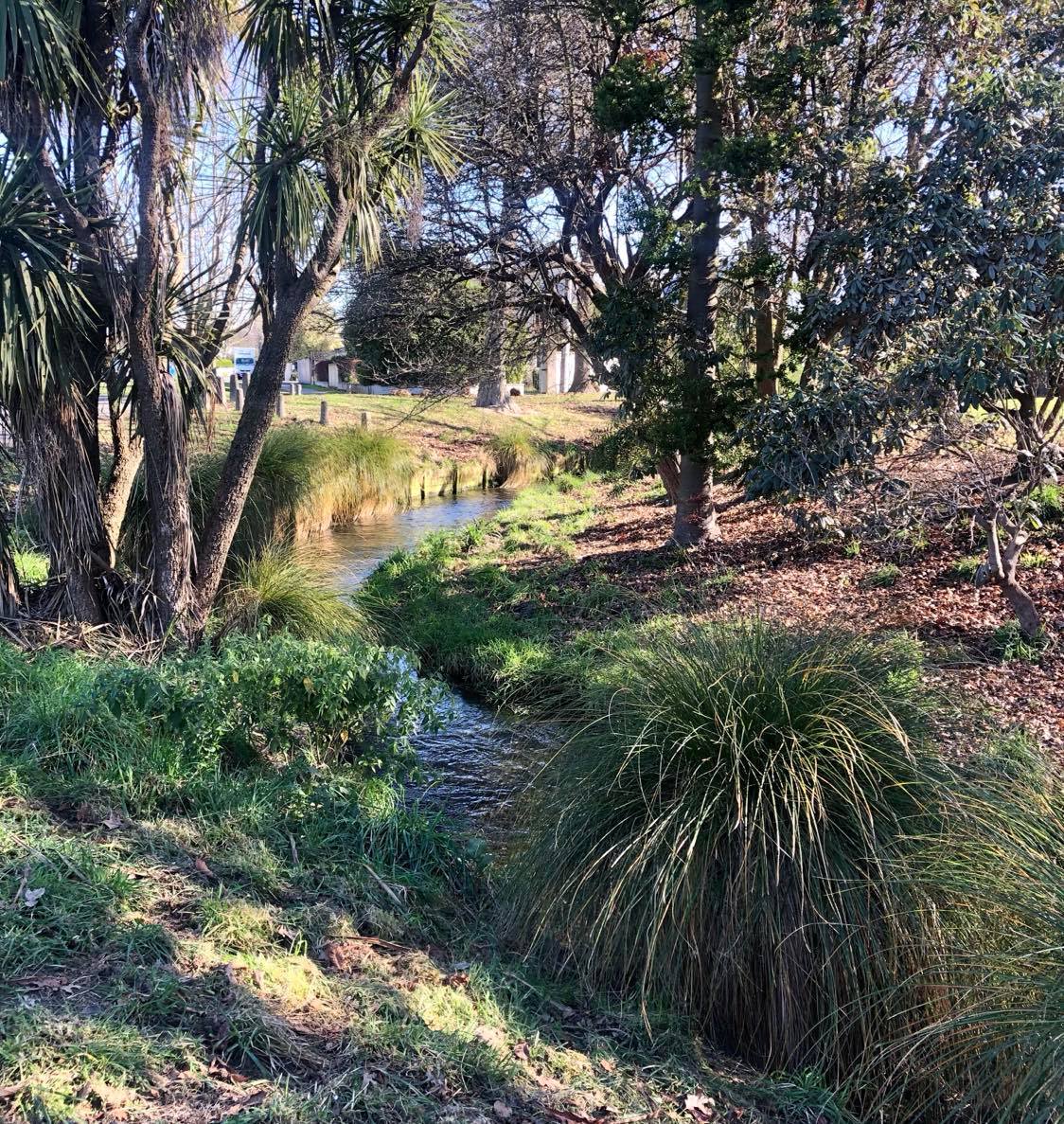Alright folks! We are back for another instalment understanding the need and application of IEM.
Building on Bardwell’s 1991 article from last week, this week I reflect on content from class and a 1995 unpublished article Integrated Environmental Management: Towards A Framework For Application by Ton Bührs.
Wider literature agrees there is no simple definition or recipe book in the undertaking of IEM. Bührs (1995) understands the IEM as a management approach “that takes into account the complex, multi-faceted and interconnected nature” of the natural environment. IEM acknowledges the environment is to be considered as a whole entity, and actions taken in one sphere can have flow-on effects on other parts.
There is a diverse range of approaches to environmental management, such as environmental impact assessment, strategic planning, environmental policy and management (Bührs, 1995). While there is no single framework that details IEM as a process, there are several frameworks that have been created. One such example of this is from Hughey (2022) in Figure 1. This framework can be broken down into five key steps that are applicable across any application of IEM.

Figure 1 Integrated Environmental Management Framework (Hughey, 2022)
Another framework that can be used to evaluate IEM performance was created by Bührs in 1995. The framework presents environmental parameters along the vertical axis and management efforts along the horizontal axis with the intention that a holistic approach considers all these components.

Figure 2 The IEM Matrix (Bührs, 1995, pg 4).
These two frameworks, although different highlight some key characteristics of IEM. These are problem definition, stakeholder participation, institutional framework, legislation and solutions. Solutions should address the quadruple bottom line – cultural, economic, environmental and social aspects. IEM intends to integrate these management techniques into one holistic approach.
References
Bührs, T. (1995). Integrated Environmental Management: Towards A Framework For Application. Unpublished. Lincoln University, Environmental Management and Design Division.
Hughey, K. (2022). Bühr’s Analytical Framework [Powerpoint slides]. Retrieved from ERST633, Lincoln University: https://learn.lincoln.ac.nz
